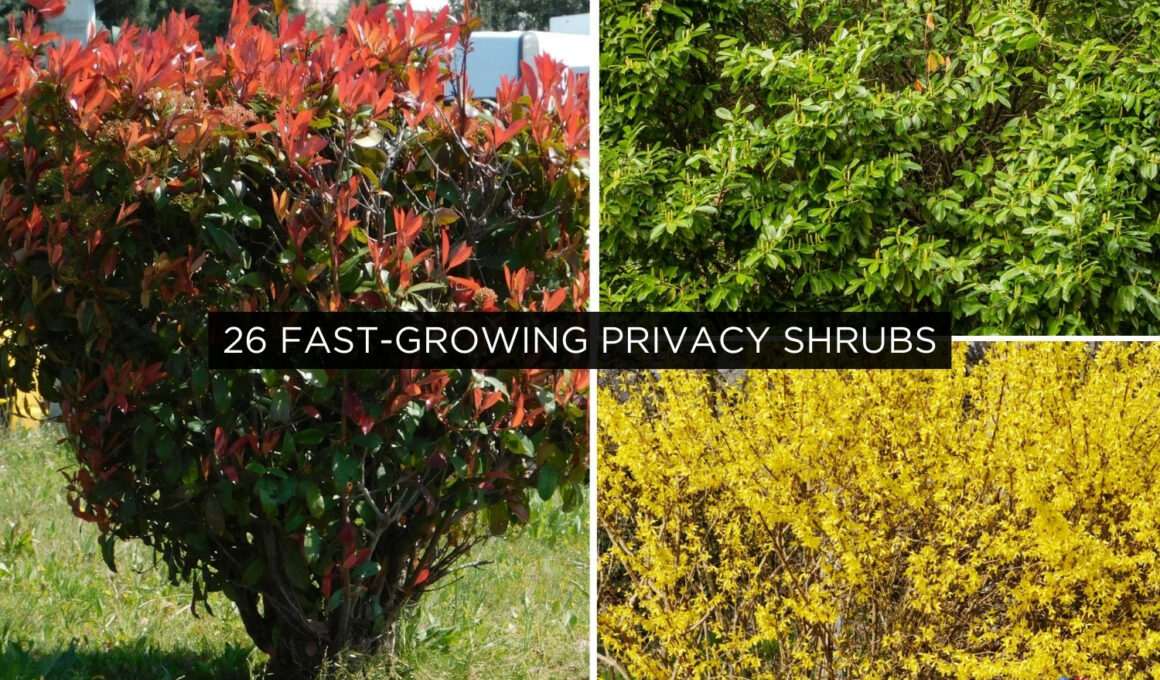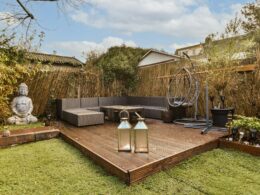In This Article Show
The desire for privacy in our outdoor spaces is a common thread among us all. Whether it’s to screen the view from a neighbor’s window or to encase our gardens in a lush, green boundary, the solution often lies in the plant world. Fast-growing privacy shrubs offer a natural, aesthetically pleasing way to achieve this goal, far surpassing the cold, impersonal feel of fences and walls.
In this guide, we’re going to explore 26 shrubs that not only grow quickly but also bring life and color to your garden. These plants have been chosen for their robust growth rates, ease of maintenance, and suitability for various climates and soil types. From the evergreen charm of Arborvitae to the dense foliage of Boxwood and the towering grace of Bamboo, there’s a shrub for every garden’s need.
Privacy shrubs are more than just a barrier; they’re contributors to your garden’s ecosystem, offering shelter and food to wildlife, and adding value to your property. Plus, they’re a testament to the beauty that can be achieved with thoughtful gardening practices.
The Top 26 Fast-Growing Privacy Shrubs
So, whether you’re a seasoned gardener or just starting to shape your outdoor space, let’s explore how these nature’s marvels can enhance your privacy and turn your garden into the peaceful haven you’ve always dreamed of.
1. Arborvitae (Thuja)
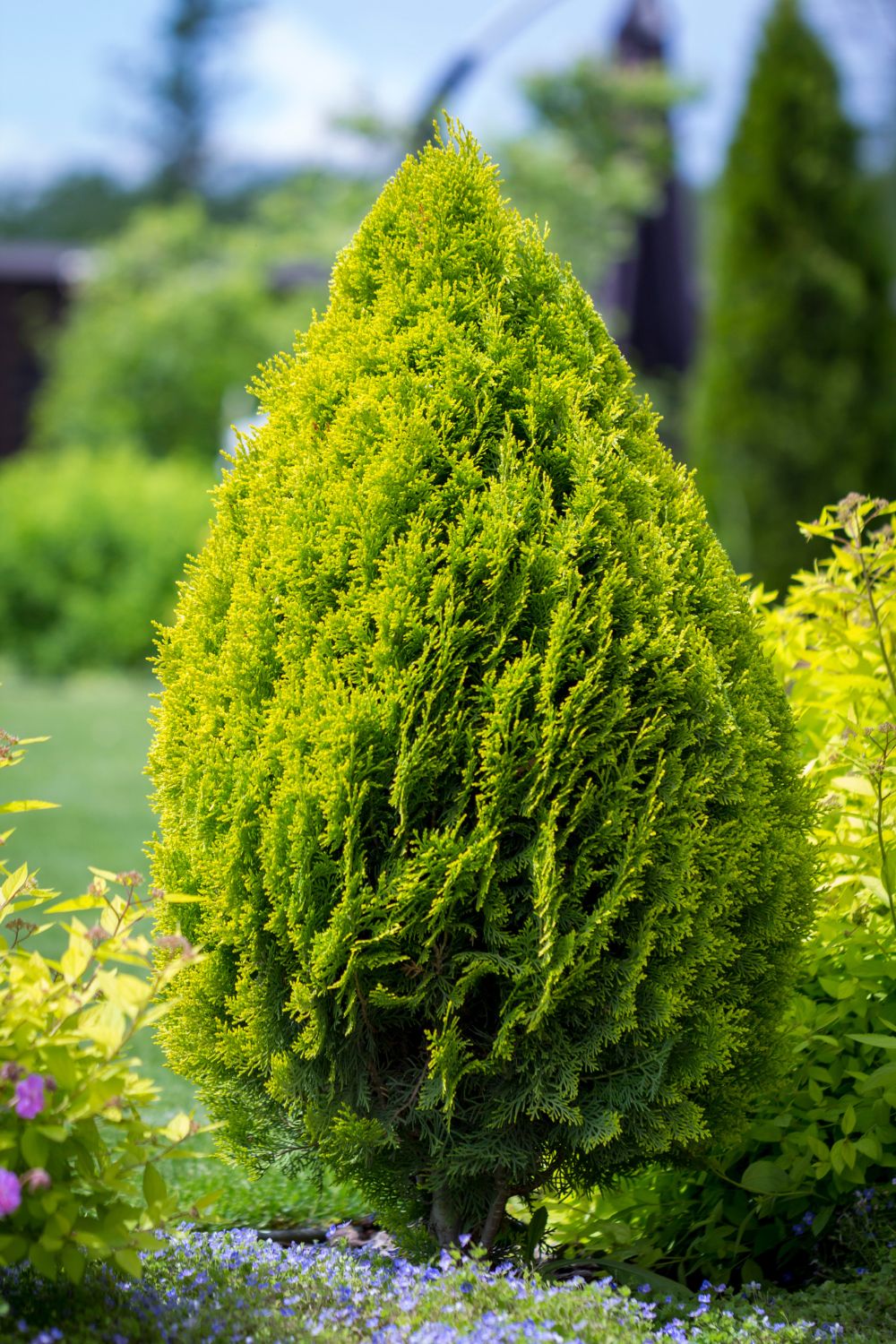
- Growth Rate: Fast, up to 3 feet per year.
- Height: Can reach up to 10-15 feet, some species even taller.
- Hardiness Zones: 2-7, depending on the variety.
Arborvitae thrives in full sun to partial shade and prefers moist, well-drained soil. Planting in the early fall or spring allows the root system to establish before extreme weather conditions. Space them according to their mature width to avoid overcrowding.
Water deeply and regularly during the first growing season to establish a deep, extensive root system. Apply a balanced fertilizer in early spring. Pruning is minimal but can be done to shape or maintain size.
Get Gardening For Beginners
Our new EBOOK shows newcomers and green thumbs alike a step by step guide to growing the garden of their dreams.
2. Bamboo (Bambusoideae)

- Growth Rate: Very fast, can grow up to 5 feet per year.
- Height: Varies by species, with some reaching up to 50 feet.
- Hardiness Zones: 5-9, depending on the variety.
Clumping bamboos like Fargesia and Bambusa are best for privacy screens as they are less invasive than running varieties. Bamboo prefers at least six hours of direct sunlight and well-drained soil. Plant clumping varieties 3 to 5 feet apart to form a dense screen.
Water regularly; bamboo loves water but cannot tolerate standing water. Mulch around the base to retain moisture and regulate soil temperature. For running bamboo, install a root barrier to control spreading.
3. Leyland Cypress (Cupressocyparis leylandii)
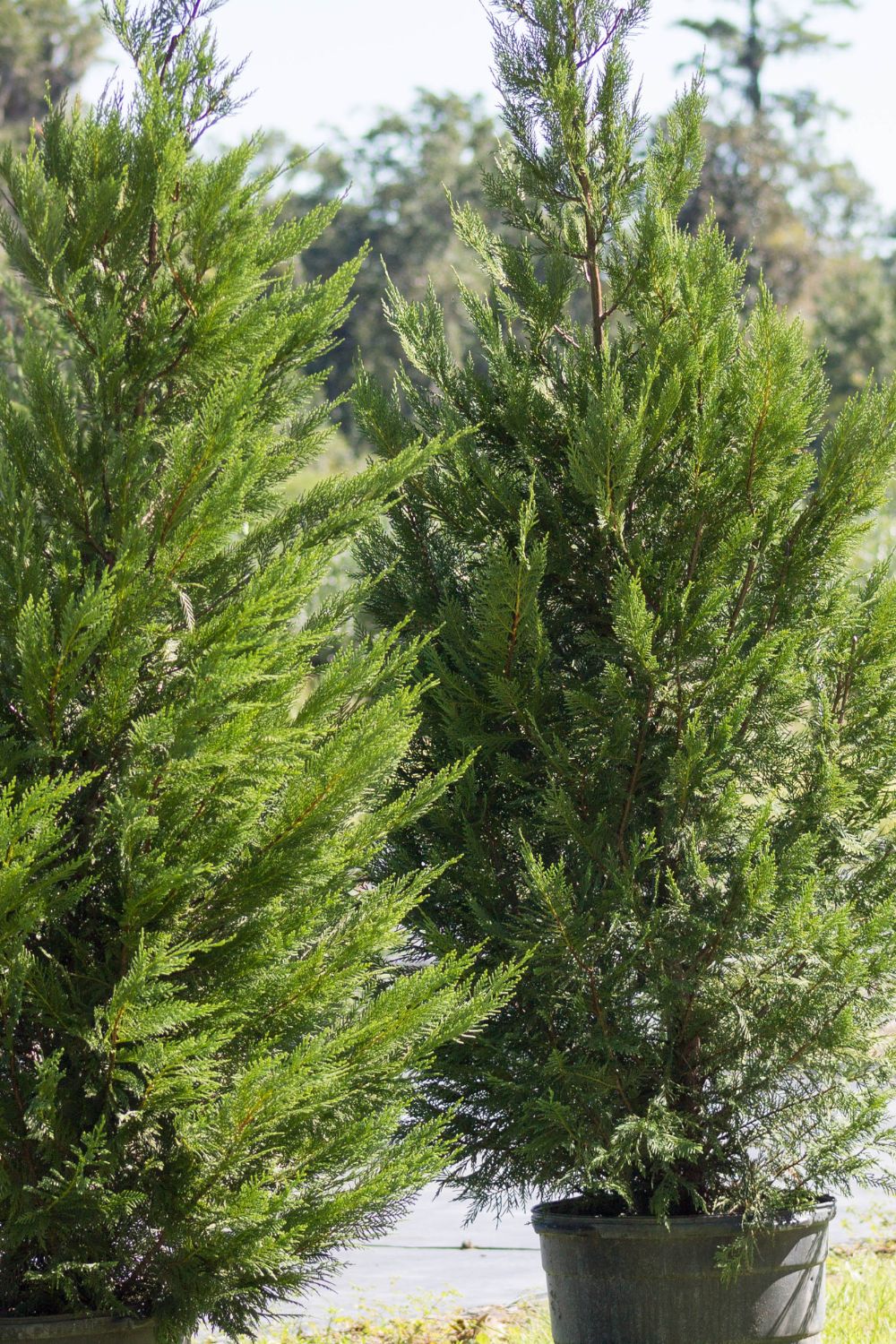
- Growth Rate: Very fast, up to 3-4 feet per year.
- Height: Can reach up to 60-70 feet tall.
- Hardiness Zones: 6-10.
Leyland Cypress requires full sun to grow dense and lush. Plant in well-drained soil, spacing them 6 to 10 feet apart to allow for growth and air circulation. Water regularly during the first few seasons to establish a deep root system.
They are drought-tolerant once established. Apply a general-purpose fertilizer before new growth begins in spring. Pruning for shape can be done in early spring, but it’s not necessary for privacy screens.
4. Photinia (Photinia fraseri)
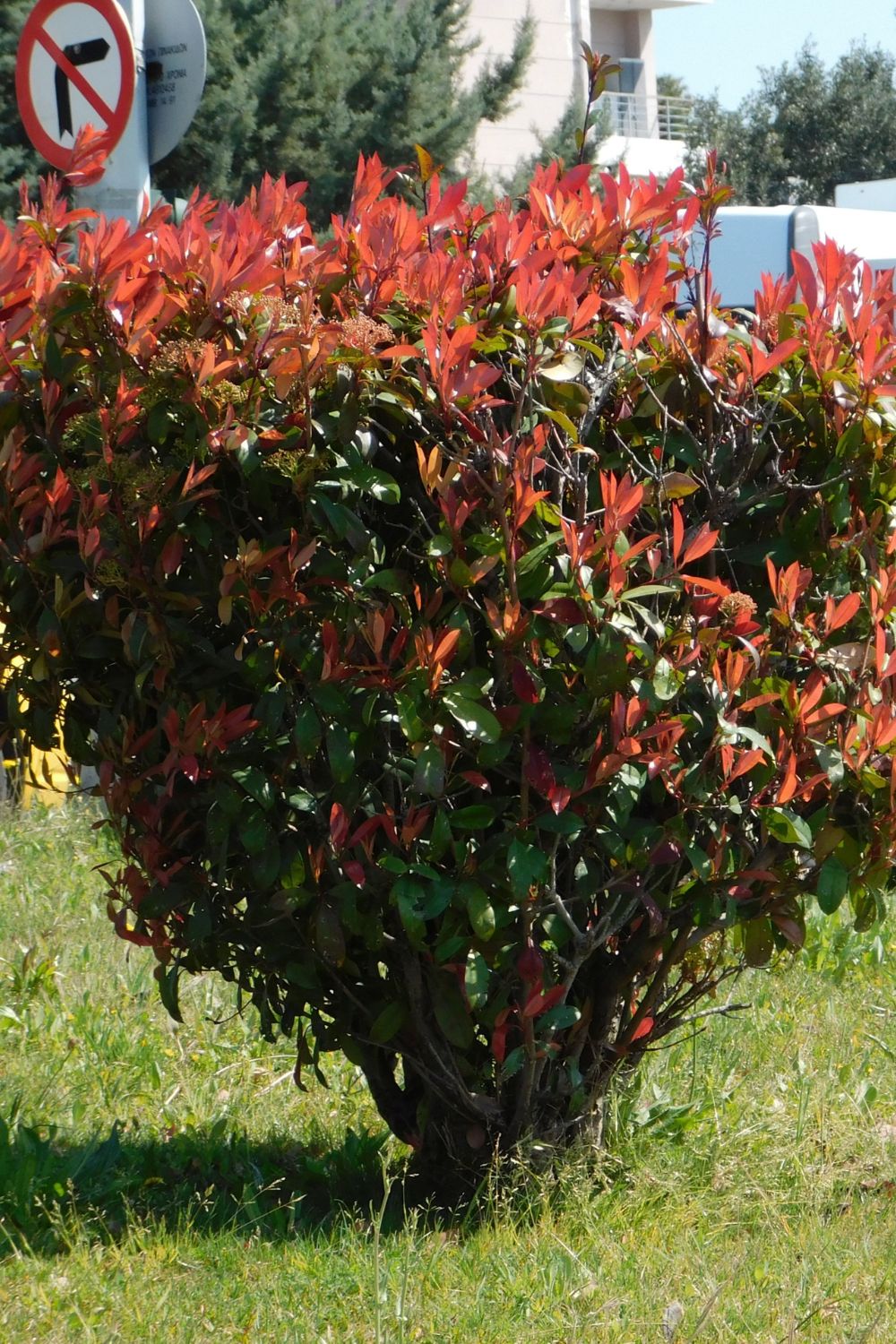
- Growth Rate: Moderate to fast, around 1-2 feet per year.
- Height: Can reach up to 10-15 feet.
- Hardiness Zones: 7-9.
Photinia enjoys full to partial sun and well-drained soil. It’s best to plant them in the early fall or spring. Space them about 5 feet apart to allow for a full, dense hedge. Water regularly, especially during dry spells, to keep the soil moist but not soggy.
Prune in late winter or early spring to encourage new growth and maintain a desired shape. Photinia is known for its red young leaves, so pruning encourages more of this colorful growth.
5. Lilac (Syringa)

- Growth Rate: Moderate, around 1 foot per year.
- Height: Varies with species, up to 8-15 feet.
- Hardiness Zones: 3-7.
Lilacs prefer full sun and well-drained, fertile soil. Plant them in the fall or early spring, spacing them 5 to 15 feet apart, depending on the variety. Water them deeply but infrequently, as lilacs do not like wet feet. Fertilize once a year in early spring with a balanced fertilizer. Prune immediately after flowering to shape the bush and remove spent blooms, which encourages more prolific blooms the following spring.
Get Gardening For Beginners
Our new EBOOK shows newcomers and green thumbs alike a step by step guide to growing the garden of their dreams.
6. Forsythia

- Growth Rate: Fast, up to 2-4 feet per year.
- Height: Can reach up to 8-10 feet.
- Hardiness Zones: 5-8.
Forsythia bushes thrive in full sun but can tolerate partial shade. They are not picky about soil but perform best in well-drained soil. Space them about 4 to 6 feet apart. Water regularly during the first growing season to establish a deep root system. Forsythias are low-maintenance; however, they can be pruned after flowering to maintain shape and size.
7. Viburnum

- Growth Rate: Moderate, about 1-2 feet per year.
- Height: Can vary widely, with some species reaching up to 10-20 feet.
- Hardiness Zones: 2-9, depending on the species.
Viburnum prefers full sun to partial shade and moist, well-drained soil. Plant them in the early fall or spring, spacing them according to the expected mature size of the variety. Water regularly to maintain evenly moist soil, especially in the first year. Fertilize in early spring with a balanced fertilizer. Prune as needed right after flowering to maintain shape and size.
8. Boxwood (Buxus)
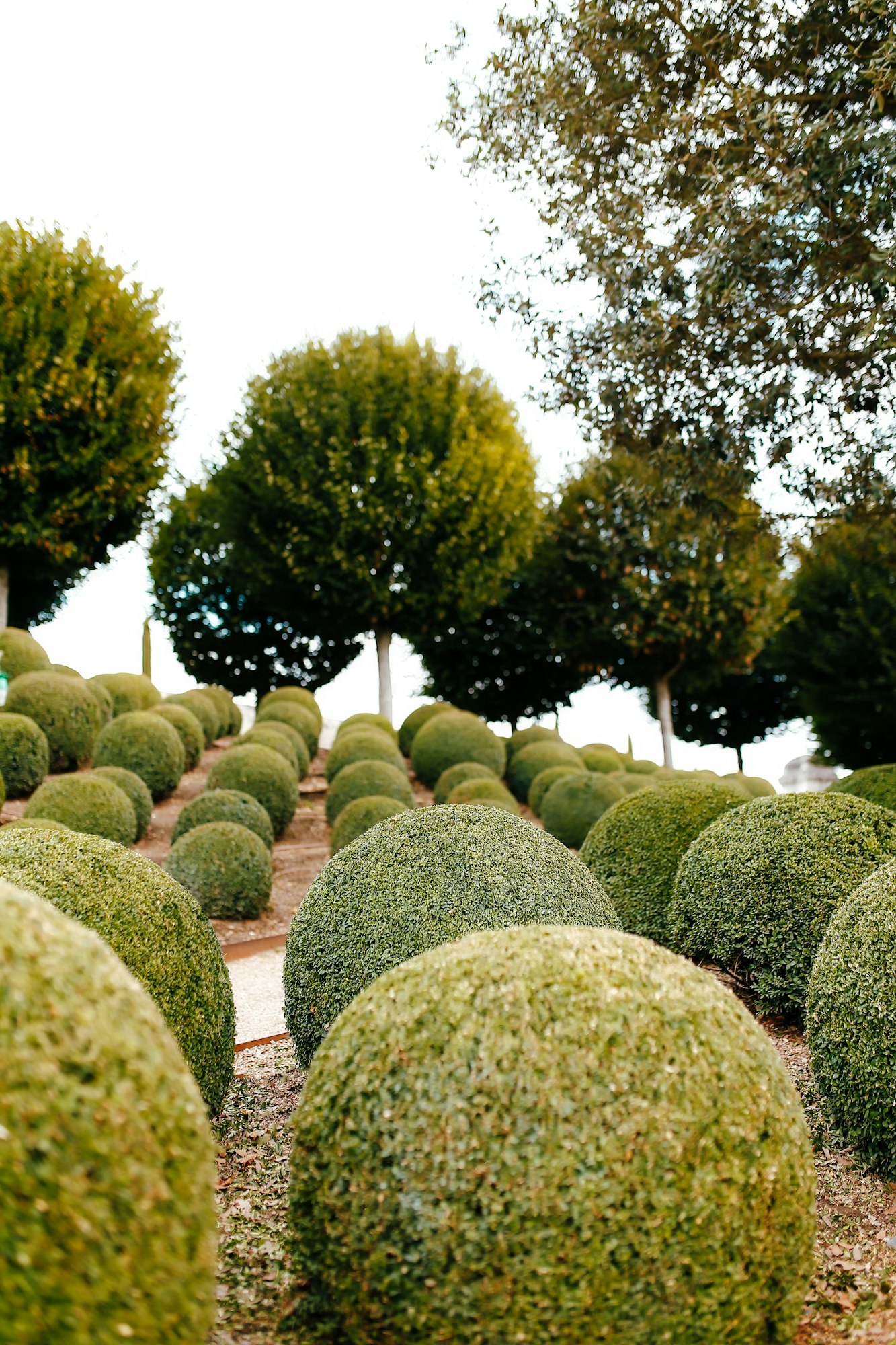
- Growth Rate: Slow to moderate, around 1 foot per year.
- Height: Can reach up to 2-12 feet, depending on the variety.
- Hardiness Zones: 5-9.
Boxwoods prefer partial to full sun and require well-drained soil. Space them 1 to 3 feet apart for hedges. Water regularly, ensuring the soil is moist but not soggy. Apply a balanced fertilizer in spring before new growth begins. Prune in late spring after the last frost to shape and maintain the desired size. Boxwoods can be shaped into formal hedges or left more natural.
9. Holly (Ilex)
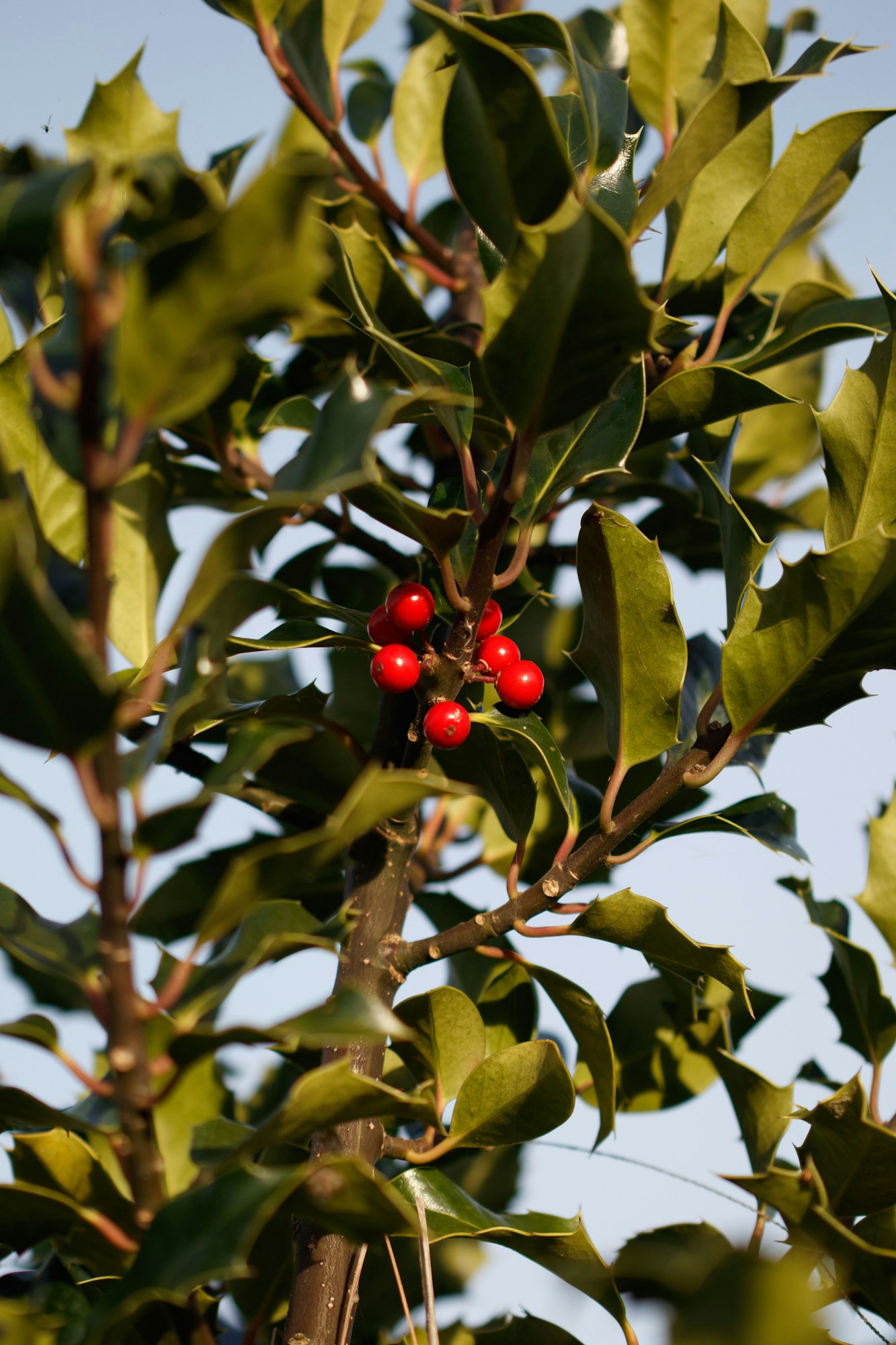
- Growth Rate: Moderate, about 1-2 feet per year.
- Height: Varies by species, from 6 to 50 feet.
- Hardiness Zones: 5-9, depending on the species.
Hollies prefer full sun but can tolerate partial shade. They thrive in well-drained, slightly acidic soil. Space plants according to their mature size, are generally 5 to 8 feet apart. Water regularly, more frequently in extreme heat. Fertilize in spring with a fertilizer formulated for acid-loving plants. Prune in winter or early spring to shape and encourage bushier growth.
10. Japanese Spindle (Euonymus japonicus)

- Growth Rate: Moderate, about 1-2 feet per year.
- Height: Can reach up to 6-15 feet.
- Hardiness Zones: 6-9.
Japanese Spindle thrives in full sun to partial shade. It prefers well-drained soil but is quite adaptable to various soil types. Space them about 2-3 feet apart for a dense hedge. Water regularly, especially during the first year of growth to establish a robust root system.
Fertilize with a balanced fertilizer in early spring. Prune in late winter or early spring to maintain desired shape and density.
11. Privet (Ligustrum)

- Growth Rate: Fast, up to 2-3 feet per year.
- Height: Can reach up to 4-15 feet.
- Hardiness Zones: 5-8.
Privet prefers full sun but can tolerate partial shade. It’s not picky about soil type but thrives in well-drained soil. Space them 2-3 feet apart for a thick hedge. Water regularly until established, then only as needed.
Privet may require more frequent pruning to maintain a neat appearance, typically twice a year in late spring and mid-summer. Fertilize in early spring and again in mid-summer to support vigorous growth.
12. Red Twig Dogwood (Cornus sericea)

- Growth Rate: Moderate, about 1-3 feet per year.
- Height: Can reach up to 6-9 feet.
- Hardiness Zones: 2-7.
Red Twig Dogwood prefers full sun to partial shade and moist, well-drained soil. It is particularly effective in wet areas where other plants may struggle. Space plants 3-5 feet apart. Water regularly to keep the soil moist, especially in hot, dry periods. Pruning in late winter or early spring encourages vibrant stem color, as the most striking red twigs are on new growth.
13. Cherry Laurel (Prunus laurocerasus)
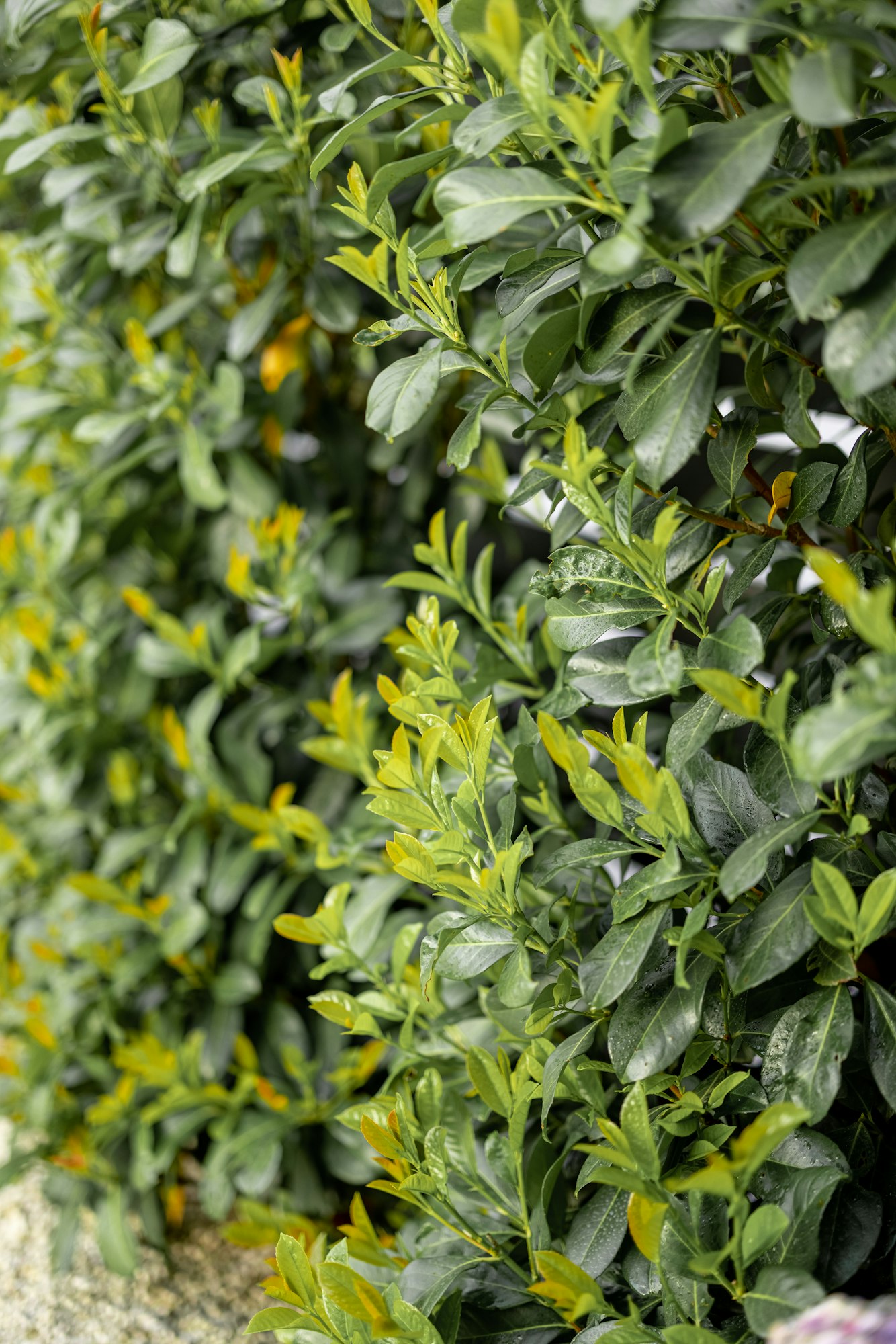
- Growth Rate: Fast, up to 2 feet per year.
- Height: Can reach up to 15-30 feet.
- Hardiness Zones: 6-9.
Cherry Laurel prefers full sun to partial shade. It thrives in well-drained soil but is adaptable to a range of soil conditions. Space them 4-6 feet apart to create a dense screen. Water regularly during the first growing season to establish a deep root system. Cherry laurels can be pruned in early spring to maintain shape and encourage lush, dense foliage.
14. Wax Myrtle (Myrica cerifera)

- Growth Rate: Fast, about 3-5 feet per year.
- Height: Can reach up to 10-20 feet.
- Hardiness Zones: 7-11.
Wax Myrtle prefers full sun to partial shade and moist, well-drained soil. It’s drought-tolerant once established. Space plants 5-6 feet apart for a privacy screen. Water regularly during the first year. Fertilize in spring with a balanced fertilizer. Prune as needed to shape, though Wax Myrtle naturally grows into a dense, rounded form.
15. English Laurel (Prunus laurocerasus)

- Growth Rate: Fast, up to 2 feet per year.
- Height: Can reach up to 20 feet.
- Hardiness Zones: 6-9.
English Laurel prefers full sun to partial shade and moist, well-drained soil. Plant them 4-8 feet apart to create a dense hedge. Water regularly, more frequently in extreme heat, to keep the soil evenly moist. Fertilize in early spring. Prune in late spring after flowering to maintain size and shape, and to encourage a denser growth.
16. Firethorn (Pyracantha)
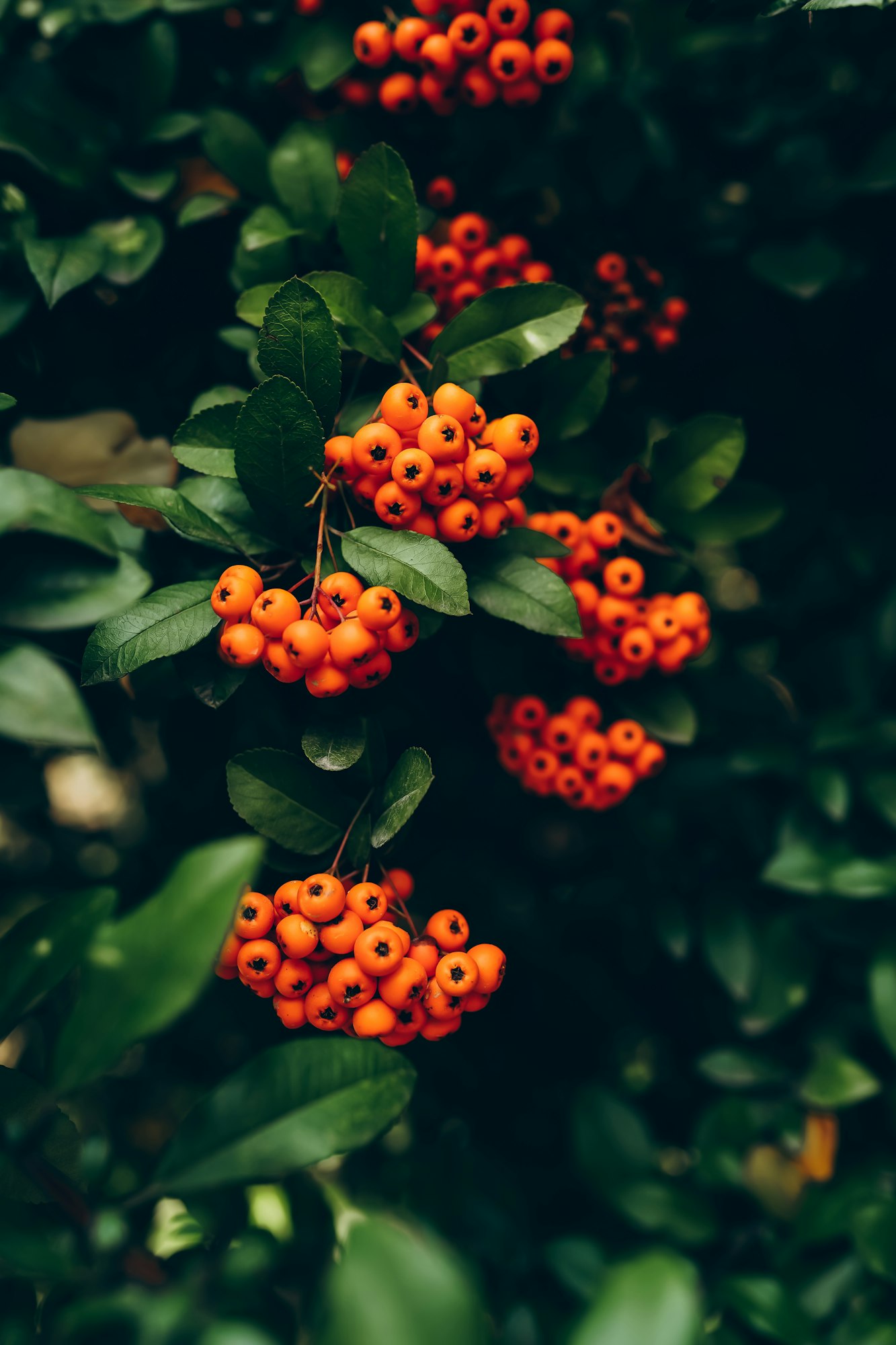
- Growth Rate: Fast, up to 2 feet per year.
- Height: Can reach up to 8-12 feet.
- Hardiness Zones: 6-9.
Firethorn thrives in full sun but can tolerate partial shade. It prefers well-drained soil and is drought-tolerant once established. Space plants 3-4 feet apart for a thick hedge. Water regularly during the first growing season. Firethorn benefits from fertilization in early spring. Prune in late winter or early spring to shape and encourage branching, which results in more berries and flowers.
17. Juniper (Juniperus)
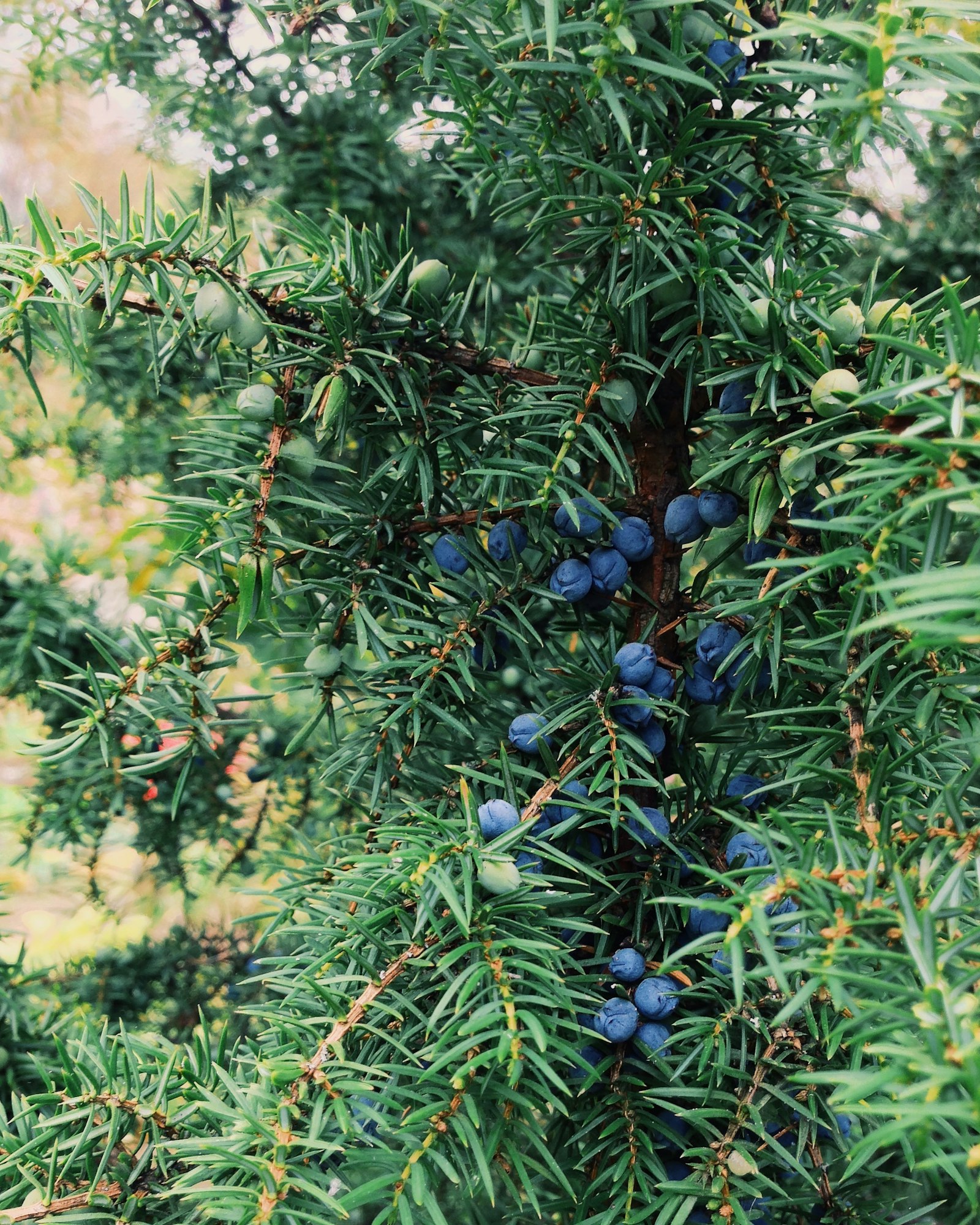
- Growth Rate: Moderate to fast, depending on the variety, up to 1-2 feet per year.
- Height: Can vary significantly with species, from ground covers to trees up to 15-20 feet.
- Hardiness Zones: 3-9.
Junipers prefer full sun and well-drained soil. They’re highly adaptable to various soil types, including clay, sandy, or rocky conditions. Space according to the mature size of the species you’ve chosen. Water deeply but infrequently, as junipers are drought-tolerant once established.
They require minimal fertilization; a light application in early spring is sufficient. Prune lightly to shape if necessary, but avoid heavy pruning as junipers do not recover well from deep cuts.
18. Yew (Taxus)

- Growth Rate: Slow to moderate, around 6-12 inches per year.
- Height: Can reach up to 10-20 feet, depending on the variety.
- Hardiness Zones: 4-7.
Yews thrive in full sun to partial shade. They prefer well-drained soil but can tolerate a range of soil conditions, including wet soil. Space plants 2-5 feet apart, depending on the desired density of your hedge.
Water regularly, especially in dry conditions, to keep the soil moist. Fertilize yews in early spring with a balanced fertilizer. Prune in late winter or early spring to maintain shape and promote dense growth.
19. Bamboo Palm (Chamaedorea seifrizii)
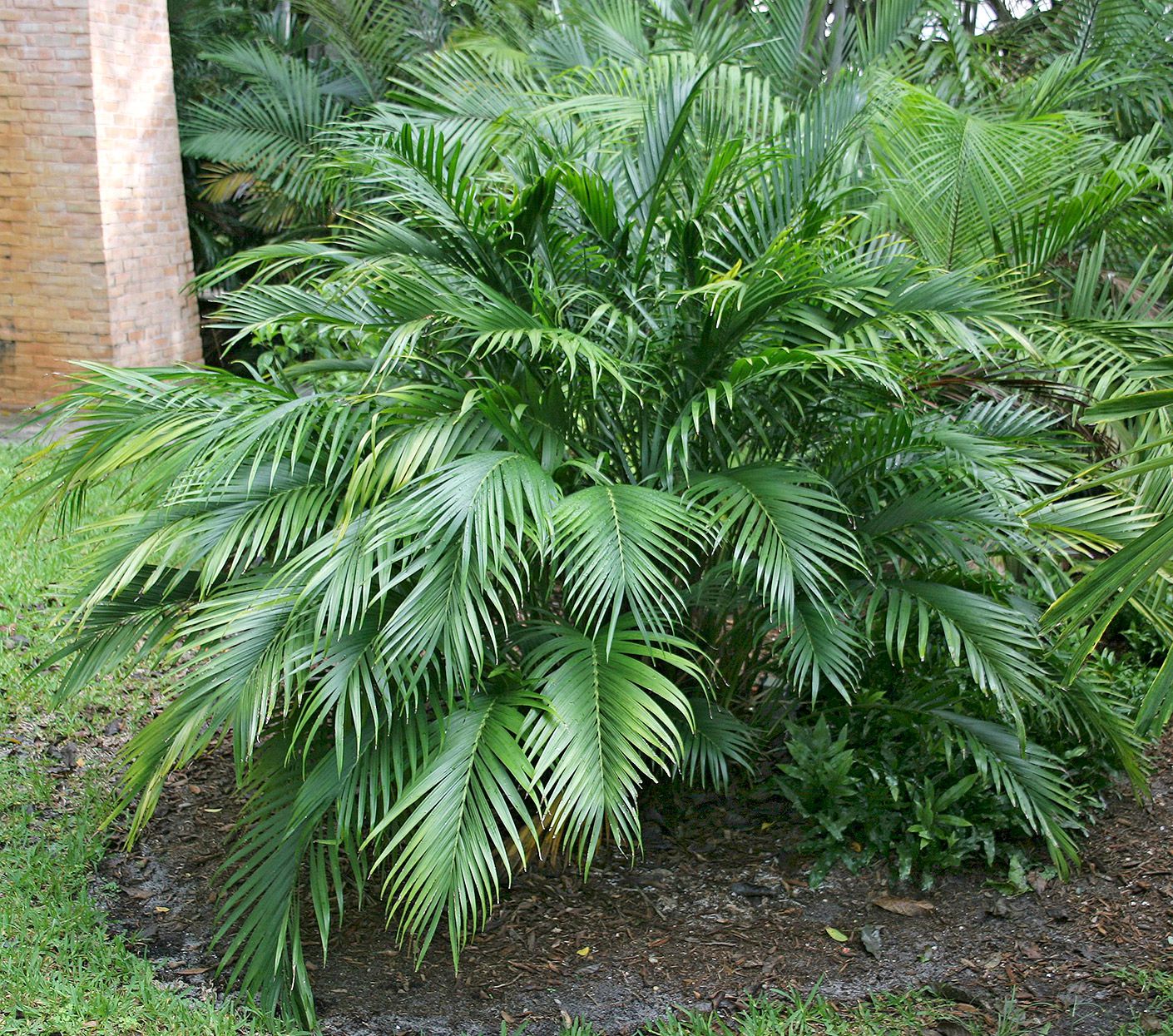
- Growth Rate: Moderate, about 1-2 feet per year.
- Height: Can reach up to 6-10 feet.
- Hardiness Zones: 9-11.
Bamboo Palm prefers partial shade but can tolerate low light conditions, making it an excellent choice for shaded gardens. It thrives in well-drained, rich soil. Keep the soil consistently moist, but not waterlogged.
Space plants 3-5 feet apart if planting in a row for privacy. Apply a slow-release fertilizer in early spring. While generally low-maintenance, removing dead fronds will keep your Bamboo Palm looking tidy.
20. Italian Cypress (Cupressus sempervirens)

- Growth Rate: Fast, up to 2-3 feet per year.
- Height: Can soar up to 40-60 feet.
- Hardiness Zones: 7-11.
Italian Cypress is known for its tall, narrow growth, making it perfect for tight spaces. It requires full sun and well-drained soil. Space them 3-5 feet apart for a dramatic, dense hedge. Water regularly during the first few years to establish an extensive root system, then only as needed.
Italian Cypress is drought-tolerant once established. Fertilize in early spring. Pruning is rarely needed but can be done to maintain shape.
21. American Arborvitae (Thuja occidentalis)

- Growth Rate: Moderate, about 1-2 feet per year.
- Height: Can reach up to 10-15 feet.
- Hardiness Zones: 3-7.
American Arborvitae prefers full sun to partial shade and moist, well-drained soil. It’s adaptable to a wide range of soil conditions. Space them 2-3 feet apart for a privacy screen. Water deeply and regularly during the first growing season, then adjust to medium moisture for mature plants. Fertilize in early spring. Pruning is optional but can be done in early spring to shape.
22. Skip Laurel (Prunus laurocerasus ‘Schipkaensis’)
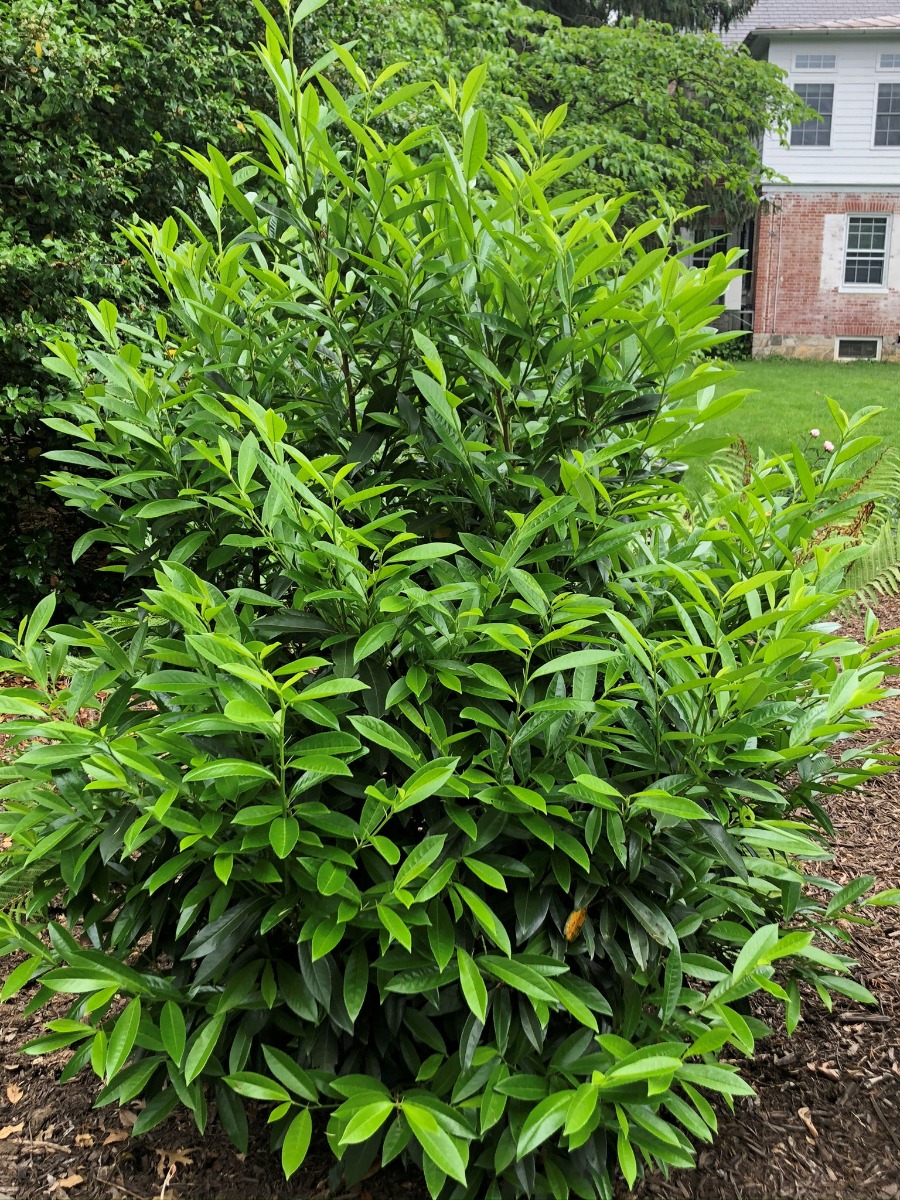
- Growth Rate: Moderate, about 2 feet per year.
- Height: Can reach up to 10-18 feet.
- Hardiness Zones: 6-9.
Skip Laurel prefers partial to full shade, making it ideal for shaded areas where other shrubs might struggle. It thrives in moist, well-drained soil but can adapt to a variety of soil types. Space plants 4-6 feet apart. Water regularly to maintain evenly moist soil. Fertilize in early spring. Prune in spring after flowering to maintain size and promote denser growth.
23. Golden Bamboo (Phyllostachys aurea)

- Growth Rate: Very fast, up to 3-5 feet per year.
- Height: Can reach up to 10-20 feet.
- Hardiness Zones: 6-11.
Golden Bamboo requires full sun to partial shade and prefers moist, well-drained soil. It’s important to install a root barrier at planting time to control its spread. Space clumps 3-5 feet apart to create a dense screen. Water regularly, keeping the soil consistently moist. Fertilize in early spring. Pruning is not usually necessary, but you can trim it to maintain the desired height and density.
24. Murray Cypress (Cupressocyparis leylandii ‘Murray’)
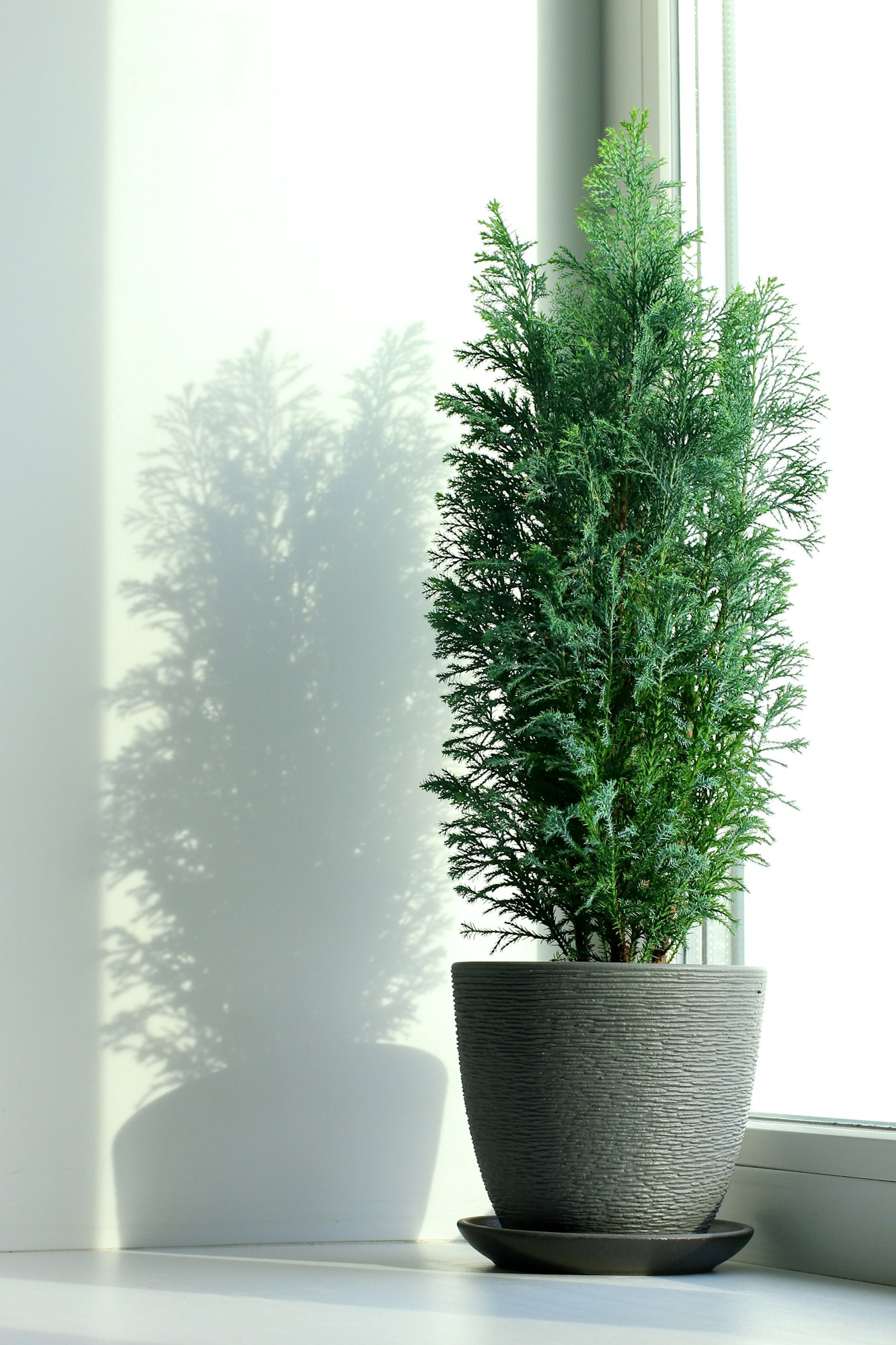
- Growth Rate: Very fast, up to 3-4 feet per year.
- Height: Can reach up to 30-40 feet.
- Hardiness Zones: 6-10.
Murray Cypress prefers full sun and well-drained soil. It’s more disease and drought-resistant than other Leyland Cypress varieties. Space them 5-6 feet apart for a privacy screen. Water deeply and regularly during the first couple of years; once established, it’s quite drought-tolerant. Fertilize in early spring. Pruning is minimal but can be done to shape.
25. Emerald Green Arborvitae (Thuja occidentalis ‘Emerald Green’)

- Growth Rate: Moderate, about 1-2 feet per year.
- Height: Can reach up to 12-14 feet.
- Hardiness Zones: 2-7.
Emerald Green Arborvitae prefers full sun but can tolerate partial shade. It thrives in moist, well-drained soil. Space them 2-3 feet apart for a tight hedge. Water regularly, especially during dry periods, to keep the soil consistently moist. Fertilize in early spring. Pruning is not necessary but can be done in early spring to maintain a uniform shape.
26. Nellie Stevens Holly (Ilex ‘Nellie R. Stevens’)
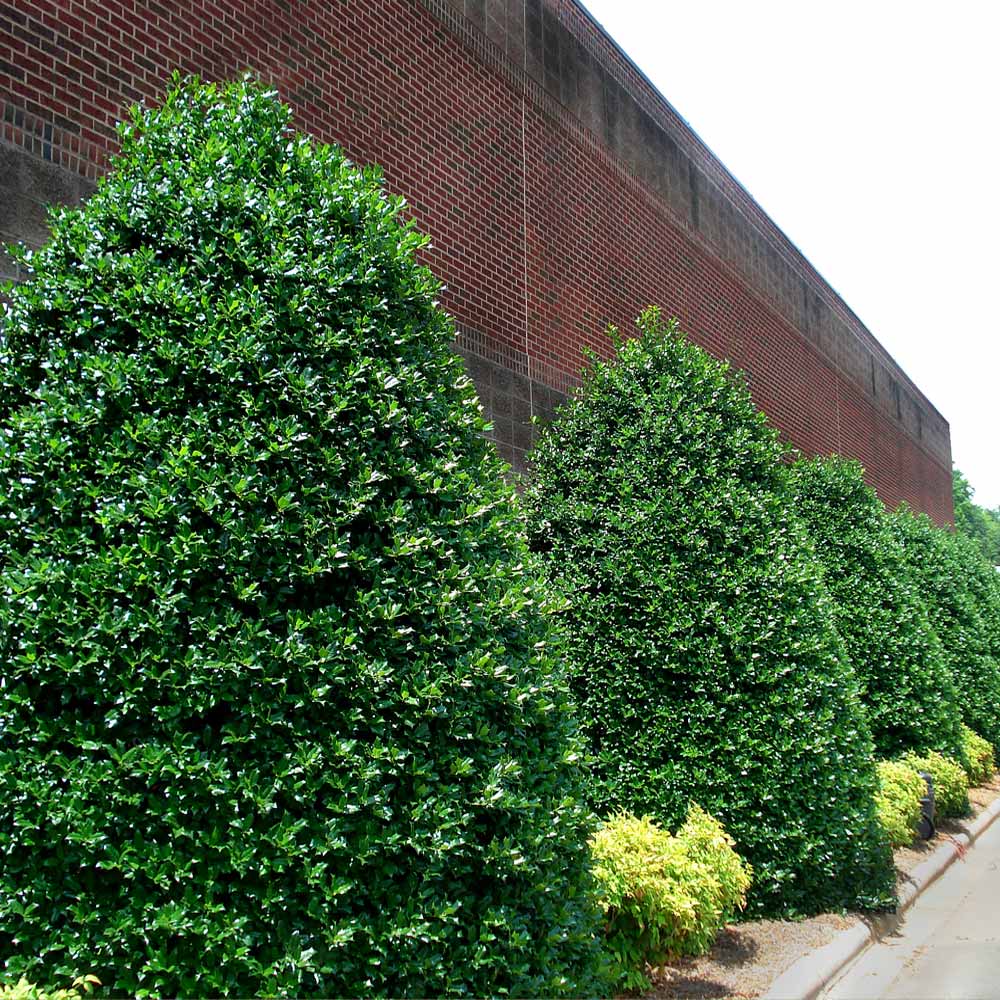
- Growth Rate: Moderate to fast, about 2-3 feet per year.
- Height: Can reach up to 15-25 feet.
- Hardiness Zones: 6-9.
Nellie Stevens Holly prefers full sun to partial shade and adapts to a variety of soil conditions, preferring well-drained soil. Space them 5-6 feet apart for a dense hedge. Water regularly to establish a deep, extensive root system. Fertilize in early spring with a balanced fertilizer. Prune in early spring if desired, to shape or reduce size.
This comprehensive list should provide a solid foundation for anyone looking to enhance their garden privacy with fast-growing shrubs, catering to a range of climates, spaces, and gardening preferences.





